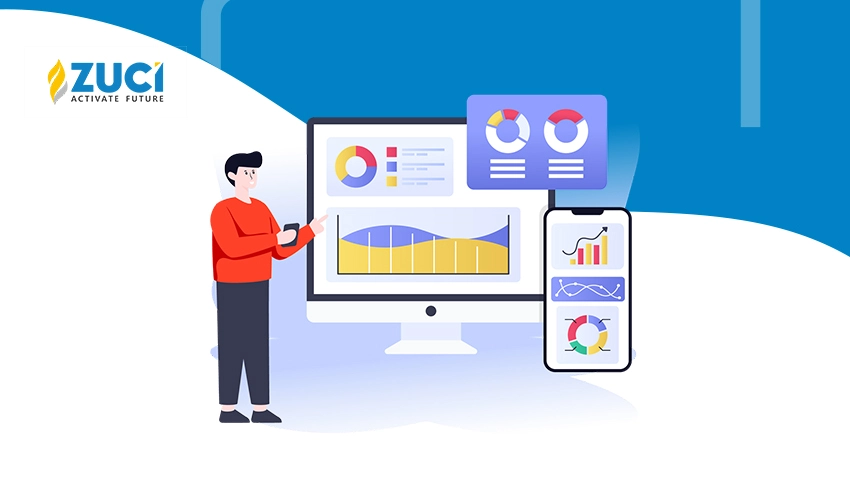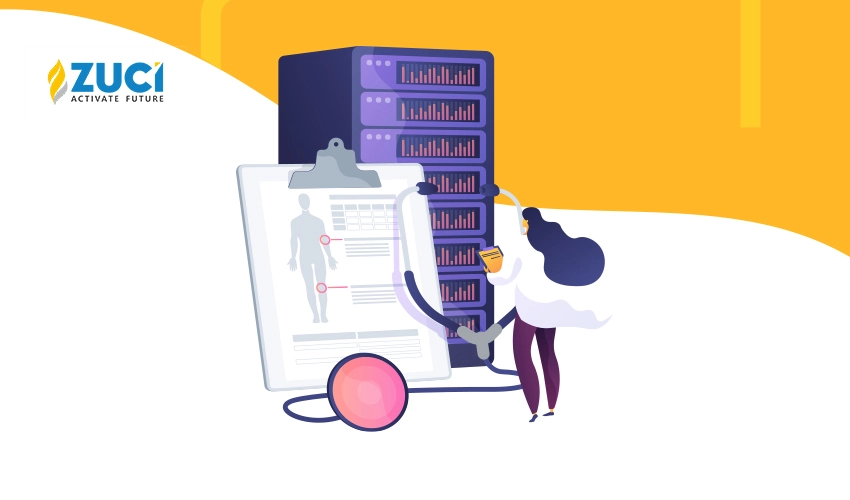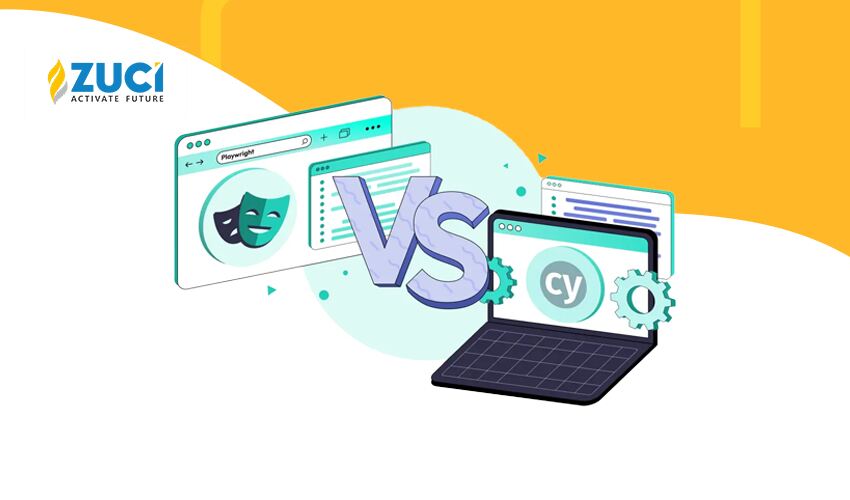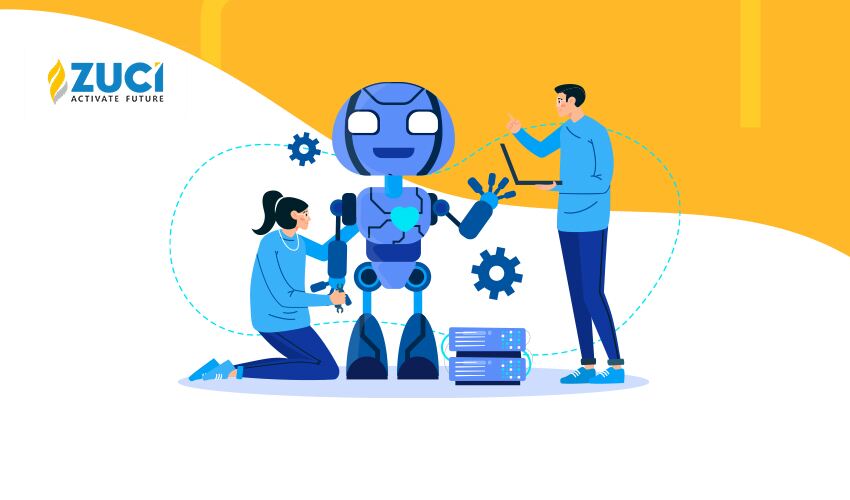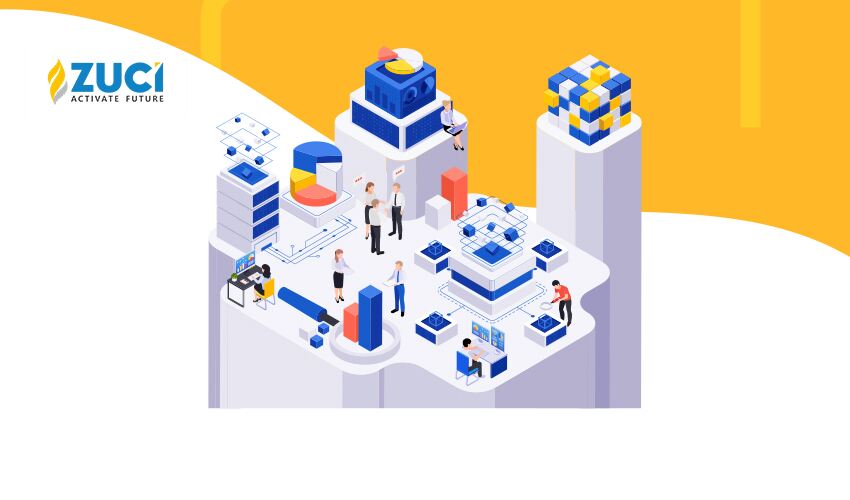Reading Time : 1 Mins
The Future of Enterprise Cloud Technology: 8 Trends to Watch Out for in 2024
Ameena Siddiqa is a seasoned marketer with hands-on experience in curating captivating content on the latest cloud, devops and enterprise technology trends. With a keen eye for emerging trends and a passion for storytelling, she has a knack for transforming complex concepts into engaging narratives that resonate with audiences across industries.
According to Gartner, Cloud computing will shift from being a disruptor to a necessity for businesses by 2028. Global cloud spending is predicted to exceed $1 Trillion by 2027. This is not a wonder, given its capacity to enhance scalability, efficiency, and innovation while offering cost-effective solutions for businesses.
However, as cloud technology evolves, several enterprises are increasingly adopting a more deliberate and strategic approach to their transformation journey. They aim to bridge the gap between merely operating on the cloud and generating comprehensive enterprise value.
In this blog, we bring out the top enterprise cloud computing trends that promise to yield more significant digital dividends through its automation capabilities and enhanced performance and customer retention in 2024.
Enterprise Cloud Technology Trends 2024
1. AI as a Service
Integrating AI services into cloud solutions will see significant growth in 2024. Cloud infrastructure plays a prominent role in making AI’s economic and social benefits accessible to enterprises. Training AI models, including substantial ones like the large language model (LLM) powering ChatGPT, requires extensive data and vast computing resources.
Instead of building their own AI infrastructure, enterprises are tapping into AI-as-a-service via cloud platforms and leveraging the potency of this transformative technology without the burden of resource constraints. AI as a Service offers pre-built AI models, tools, and APIs hosted on cloud platforms that help enterprises implement AI functionalities without hands-on AI expertise and infrastructure.
2. Serverless Computing & Containerization
Growing in popularity in the business realm, serverless computing allows developers to focus on developing, testing, and deploying codes rather than spending time managing their servers and infrastructures. Unlike traditional cloud services that bill enterprises based on the number of servers required to host their infrastructure, the serverless model charges only for the resources they actively use. This eliminates extra costs enterprises must pay for idle servers and ensures optimal resource utilization and a cost-effective approach that aligns with business priorities.
Containerization is an emerging cloud computing trend that encapsulates applications into self-contained containers that help developers build reliable software across diverse computing environments and deploy applications frequently and with agility.
Also read: What is cloud transformation? All you need to know.
3. Multi-cloud and Hybrid Strategies
Multi-cloud and hybrid solutions have already gained widespread popularity among enterprises, adding value to those managing intricate, distributed workloads and looking for an optimal balance between scalability, cost-effectiveness, and performance.
The multi-cloud strategy allows organizations to leverage solutions from various cloud service providers and seamlessly integrate them into one unified platform. This, in turn, facilitates swift deployment and management of applications across multiple clouds, offering optimal flexibility and scalability for enterprises. Additionally, by integrating multi-cloud solutions into their IT strategy, enterprises can pick the cost-effective cloud services and centrally manage them from their unified platform, putting the vendor lock-in or overspending worries to rest.
Meanwhile, the hybrid model integrates legacy data centers with elements from the public clouds, effectively distributing the workload and applications across both environments. With its ability to store specific resources on-premises while leveraging the cloud for others, many enterprises have opted for a hybrid approach in adopting cloud technologies. Hybrid clouds prove advantageous, especially for enterprises with extensive legacy systems and the need to retain sensitive data or applications within their servers while leveraging the benefits of public cloud services. Moreover, a hybrid cloud removes the need for excess resources to maintain all the data in one unified platform, ultimately leading to cost reductions.
4. Edge Computing & IoT
While cloud computing for enterprise transformed how businesses store, process, and access data by centralizing it in remote data centers, edge computing takes up a distinct approach by bringing computational power closer to where it’s most crucial—right at the network’s edge.
In a traditional cloud setup, data is transmitted to a remote cloud server for processing. Meanwhile, edge computing sets up a compact computing environment within the vicinity where the data is generated. This eliminates the latency associated with the back-and-forth transmission of data to a distant cloud server and enables real-time data analysis and decision-making.
By 2024, the deployment of advanced networks such as 5G and energy and memory-efficient processors and algorithms will enhance the viability of edge computing for the growing requirements of the applications.
5. Artificial Intelligence and Machine Learning
Artificial intelligence and Machine Learning are already reshaping all industries, not to mention cloud computing. The integration of AI and ML with cloud technology holds the potential to enhance and revolutionize cloud computing’s benefits significantly.
Tech giants like AWS and Google have invested heftily in these technologies, allowing developers to harness the power of AI and ML for different applications.
As more businesses shift their operations to the cloud, they have intensified emphasis on data security. With cloud platforms powered by AI and ML, security measures are becoming more intelligent and adaptive by gaining insights from data access and usage patterns. This helps enterprises quickly spot and deal with possible security threats.
In cloud computing, businesses often move resources around to handle tasks as needed. AI and ML-powered cloud systems study past data to predict the resources that companies may need in the future and adjust resources on their own to keep everything running seamlessly.
With all the disruptions AI and ML have already brought, they will drive efficiency and innovation for enterprises over the coming years.
6. Cloud Security and Compliance
As enterprises shift their infrastructure and workloads to the cloud, security threats remain the topmost concern for most of them. According to the Statista report, 27% of companies struggle with user account compromise attacks in the cloud, and 79% of others believe security is their primary hurdle. The statistics further show that the public cloud management and security services market grew by $42.4 billion in 2023. The significance of cloud security is poised to grow in 2024 as more enterprises invest in cloud security solutions. Data encryption, access control policies, authentication rules, and data disaster recovery will increase demand for cloud computing services.
7. Citizen Developer
A noteworthy trend in cloud computing is the emergence of the citizen developer. In the initial days, coding skills were a sine qua non for developing and deploying applications. However, low-code/no-code tools enable individuals without technical backgrounds to develop applications that would have traditionally demanded the expertise of trained software engineers. In the upcoming years, major cloud service providers such as AWS, Google, and Microsoft are expected to launch tools allowing developers to build intricate applications through a user-friendly drag-and-drop interface. OutSystems, QuickBase, Appian, AWS’s HoneyCode, and Microsoft’s Power Platform are already on the chart in this space, and we anticipate witnessing more and more platforms drive innovation in 2024.
8. Virtual Cloud Desktops (VCDs)
According to the Allied Market Research report, the cloud-based VDI market reached $10,514 million in 2023 with a CAGR of 16.5% and is expected to reach $30.63 billion in 2027 at a CAGR of 17.3%. Virtual desktops, also called Cloud Desktops or Virtual Cloud Infrastructure, are already disrupting the cloud landscape by seamlessly integrating the best of cloud capabilities with the versatility of virtual desktops. They offer businesses a virtualized desktop environment hosted in the cloud. VDs make it easy to control user security from one place, saving IT effort. It allows companies to access data and applications from anywhere worldwide and enhances security and data protection through encryption and authentication techniques. With innovative VDI services such as Click-to-Run solutions already grabbing the attention of enterprises, the trend has the potential to transform the cloud computing landscape in 2024.
Final Thoughts
Cloud computing is set to define the future of business technology in 2024 and beyond. Certainly, cloud computing technology will continue to evolve with the constant ebb and flow of tech trends. While understanding the cloud trends is just one significant piece of the puzzle, implementing a winning cloud strategy goes a long way in making the most of these opportunities.
As a seasoned enterprise cloud solutions consultation and implementation partner, Zuci Systems has helped a dozen enterprises navigate cloud technologies skillfully and build a smart cloud adoption strategy that works for them. We help them gain complete control over their cloud setups by using proper configurations, best practices for observability, and solutions that reduce costs while boosting performance.
Book a pro bono call with our cloud wizards today to advance your business in this increasingly competitive and dynamic landscape.
Related Posts




